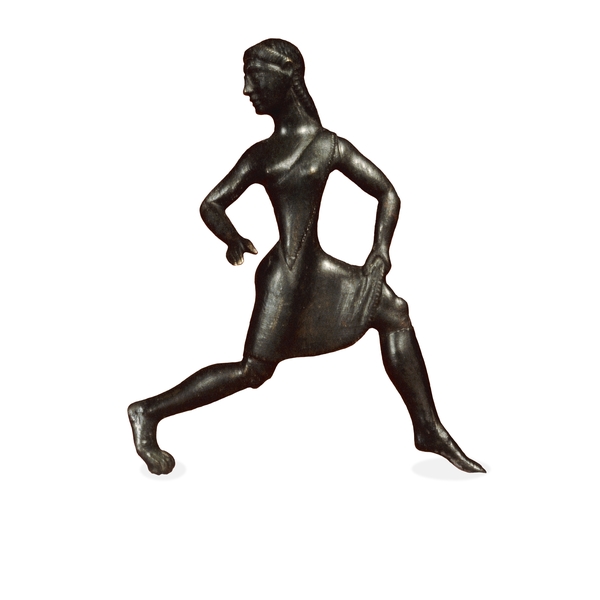if you want to learn more:
The transition in Bronze Age Greece from the Minoan (pre-Hellenic) to the Mycenean culture has been linked by some archaeologists to the massive Thera (Santorini) volcanic eruption in the Aegean, nowadays thought to have occurred in the late 17thC BC (ca. 1650-1600 BC). Some have been tempted to explain the myth of Atlantis by reference to the Thera eruption. Cornell's Sturt Manning is among the leading authorities on this eruption; see his definitive guide to the controversies about its dating and impacts.
Browse the Parthenon or the Agora in Athens. (You may want to take a crash course in Greek architecture first.)
The city of Corinth, situated at the Isthmus (the land bridge between the Peloponnesos and mainland Greece), is famed in Greek mythology; its ruins, which you can still tour today, have produced some stunning archaeological finds, including a great many coins.
The University of Pennsylvania's Museum of the Ancient Greek World illustrates daily life and much more.
You can find out more about our course mascot (pictured at the bottom of this page) here (thanks to Dave Blome for the reference).
Many texts and some images are available via Paul Halsall's monumental Ancient History Sourcebook. You can also get recommendations for top ten page-turners about the ancient world (including prehistory!), some by ancient authors.
How did Gk texts survive to tell us of this ancient culture? Papyri (pl. of papyrus) from the Archaic and Classical Periods have not weathered the passage of time well (you can see an example of a fragmentary papyrus of Homer's Iliad here, and even this poorly preserved exemplar is from the 4thC BC, at the very end of the Classical Age), but fortunately they were so highly valued throughout the ancient world that copies (or, more often, copies of copies of copies...) do survive. Dave Blome kindly provides this short entry on literacy in the ancient world from the Oxford Classical Dictionary; you can access the OCD in its entirety via the Cornell Library portal.
Zack Snyder's 2007 film, 300, is only one (though probably the most celebrated) of recent film adaptations of Greek history and mythology. You can compare this depiction of Leonidas and his brave 300 with what Herodotus tells of the Battle of Thermopylae, early in 480 BC.
The British Museum puts you at the helm of an Athenian trireme (war galley with three banks of rowers) at the Battle of Salamis, a few months later in 480 BC. You can also learn from the Greek Navy or from the Trireme Trust about a reconstructed trireme, "Olympias," which may be coming to visit NYC at some future date.
Read part of Xenophon’s (ca. 430-355 BC) account (in his Symposium) of a beauty contest between Socrates and Critobulus (capp. IV.10-28 and V.1-9). Socrates, sometimes described as the world’s 1st hippy, is not merely unhandsome but the diametric opposite of the Greek ideal of beauty; he is also rabidly critical of the values of Athenian life. Yet his participation, con gusto, in that most stereotypical of Gk manly activities -- the demonstration of personal aretê through agôn -- illustrates how embedded he was in his parent culture. See how that all played out for him.
Greece, never a heavily wooded country, has experienced some catastrophic forest fires in recent years. Read about their impact on the environment (described by some as what amounts to "biblical damage") and on Greek politics (not unlike the impact of the 5thC BC plague on Athenian politics during the war with Sparta?).

UPDATE November 2014: following the war in Gaza and Israel in summer 2014, a trio of Israeli artists (in collaboration w/ British, American, Japanese, Guinean, and others) issued STRIKE! an electronic opera based on Aristophanes' Lysistrata and set in T.L.Village.
Available for free download from SoundCloud until 10 Nov 2014.